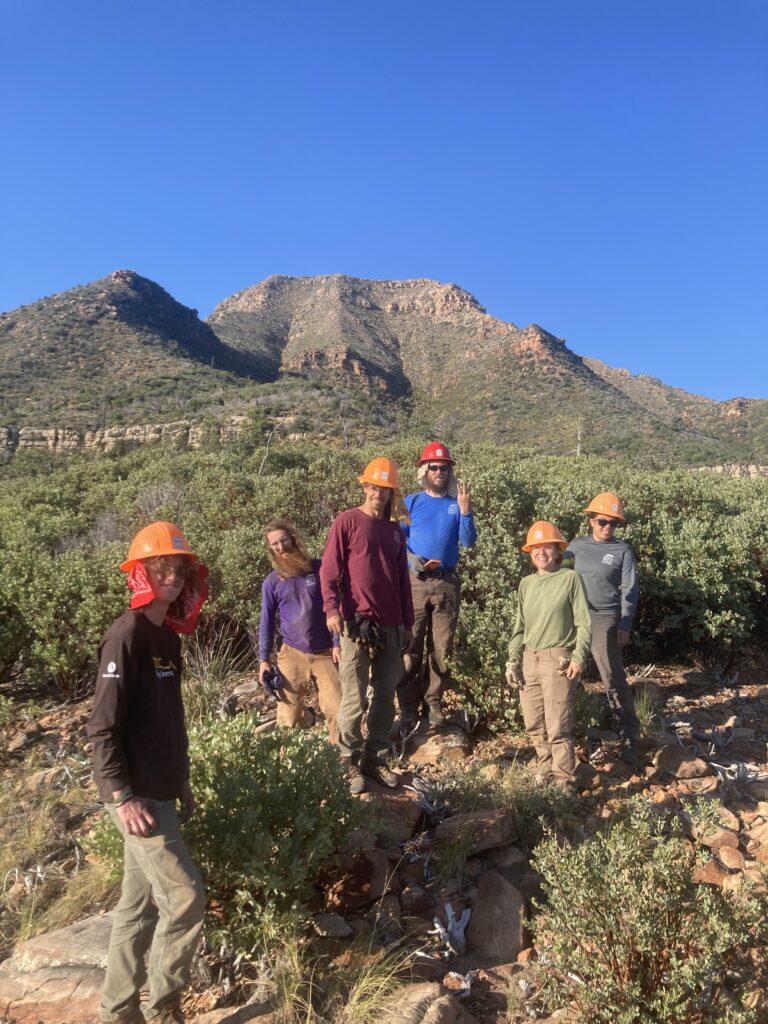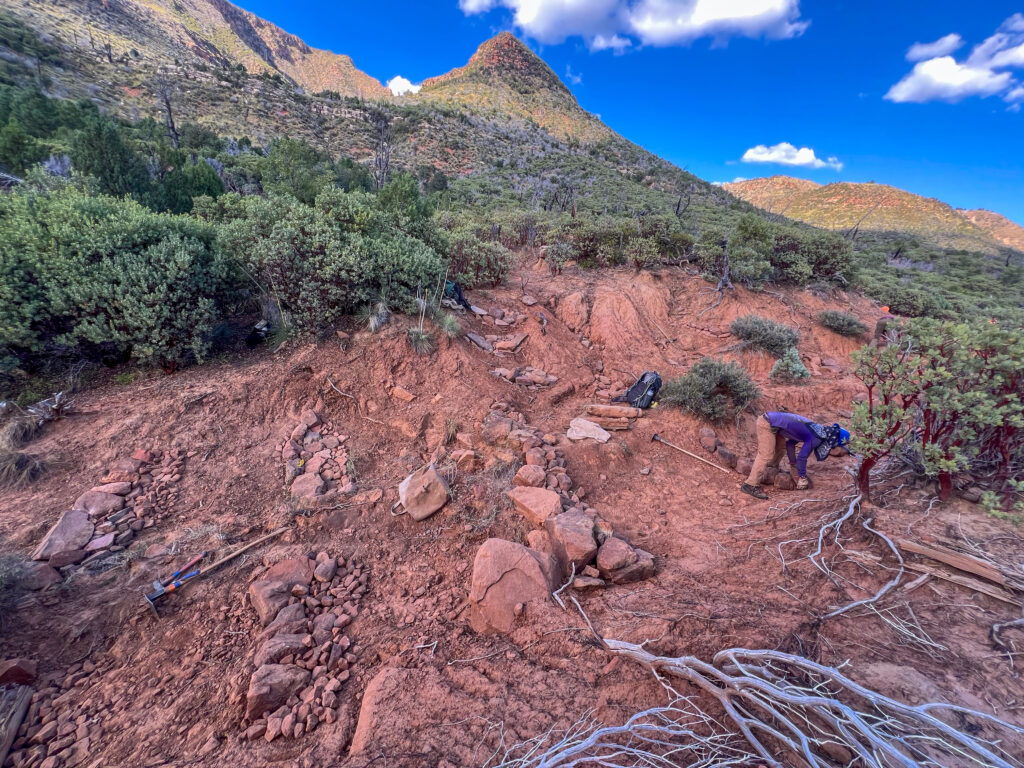
Written by Dexter Kopas, Wild Stew Field Crew Leader.
Another year, another joyous autumnal return to the beauty of the Mogollon Rim. This is always one of my favorite places to work, and this time did not disappoint, with ample elk calls, stream crossings, views wherever you walk, thoughts on the flow of water, pleasant weather, and opportunities for world-class mountain biking.
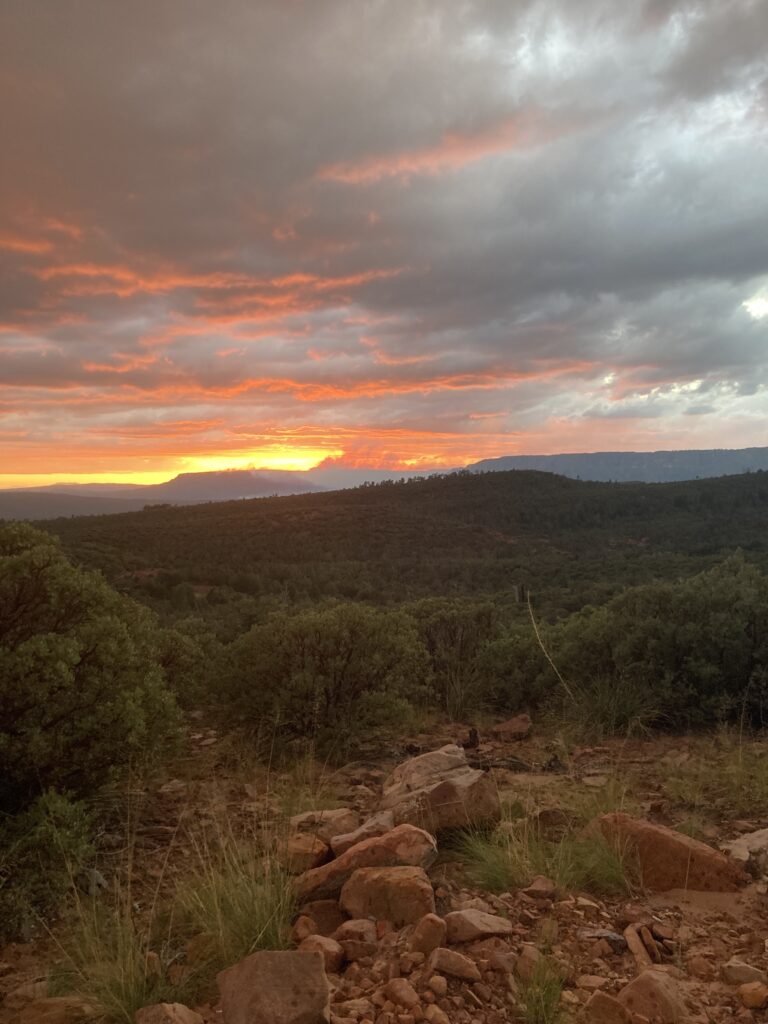
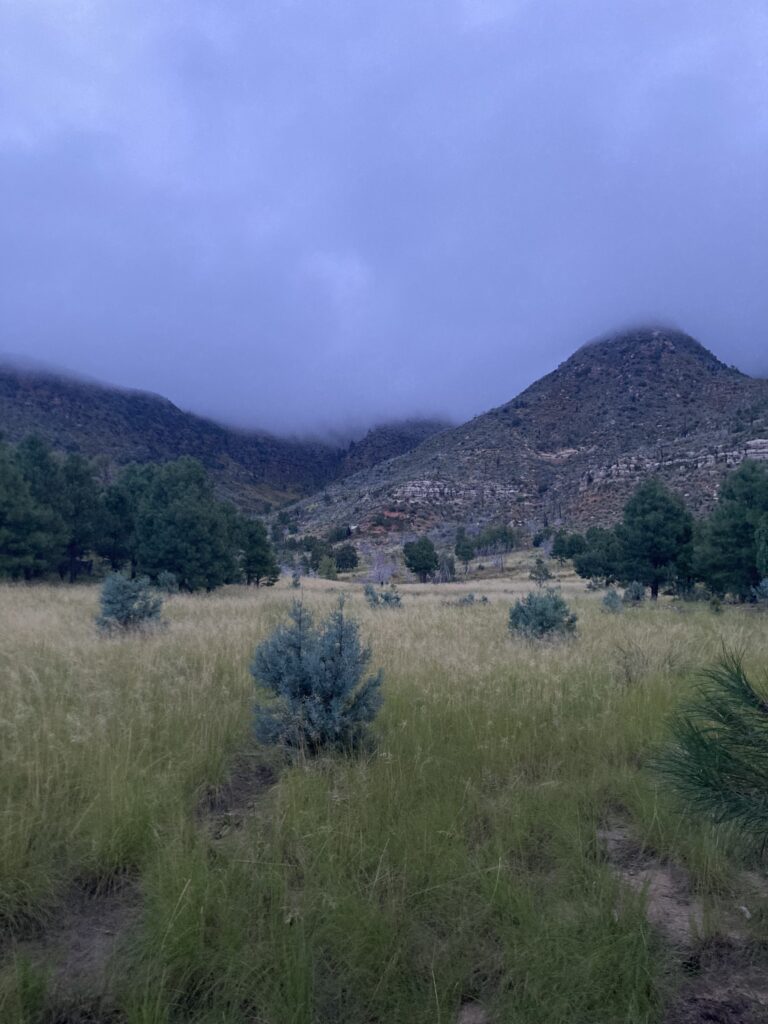
For our fifth hitch since the Highline Trail Restoration Initiative began back in the spring of 2022, Wild Arizona toiled away on this major update to the historic Highline National Recreation Trail. For some history on the trail, we can pull from this summary of the restoration project from National Forest Foundation:
The Highline Trail is an historic route that was cut in the late 1800s and believed to be used as a travel corridor to connect homesteads and communities around the towns of Payson and Pine. The 51-mile route began to lose its day-to day use value when the Civilian Conservation Corps built Forest Road 64 in the 1930s. This posh-by-comparison road provided an alternative to the precariously situated dirt trail that—to this day—traverses fall lines and drainages. No longer needed to run cattle and wagons, the trail was repurposed into a recreation destination and designated as the Highline National Recreation Trail in 1978, also sharing 17 miles with the Arizona National Scenic Trail.
Traversing fall lines and drainages, you say? Any seasoned reader of our blog knows that this is no good way to build a trail. Sometimes a trail just happens to accrue where people have walked many times before, and this is likely how the Highline began. This will lead to the trail carrying a lot of fast-flowing water downhill. Give it enough time (100 years or more, in some cases here) and it will erode out into a deep trench, as in this photo below.
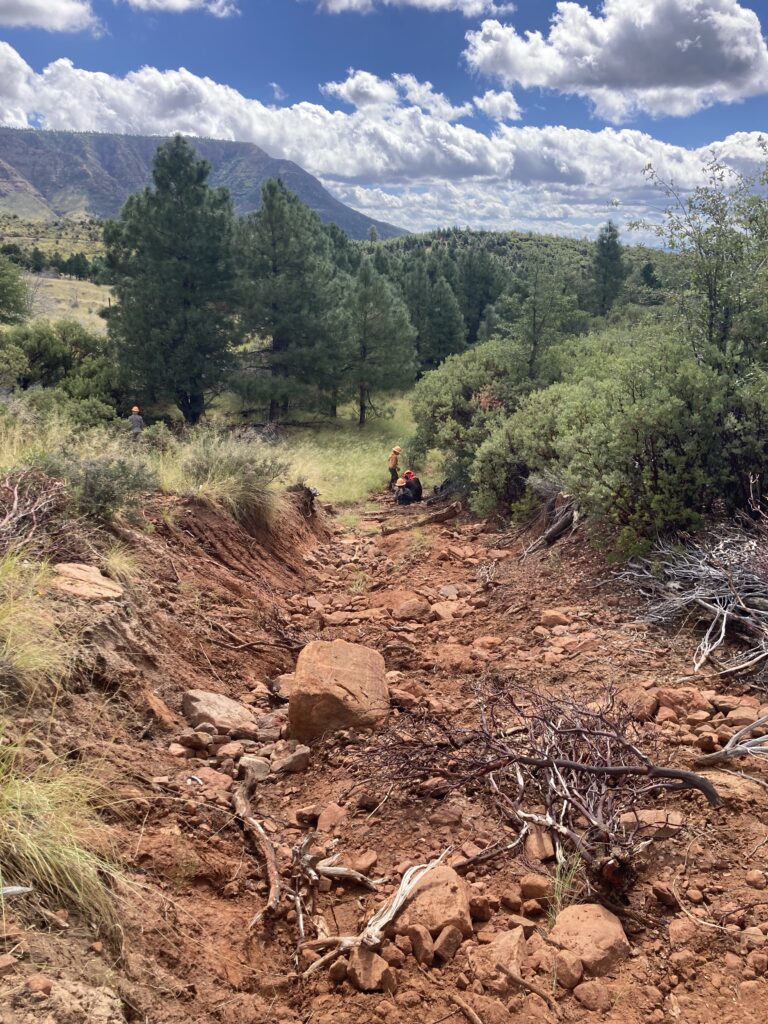
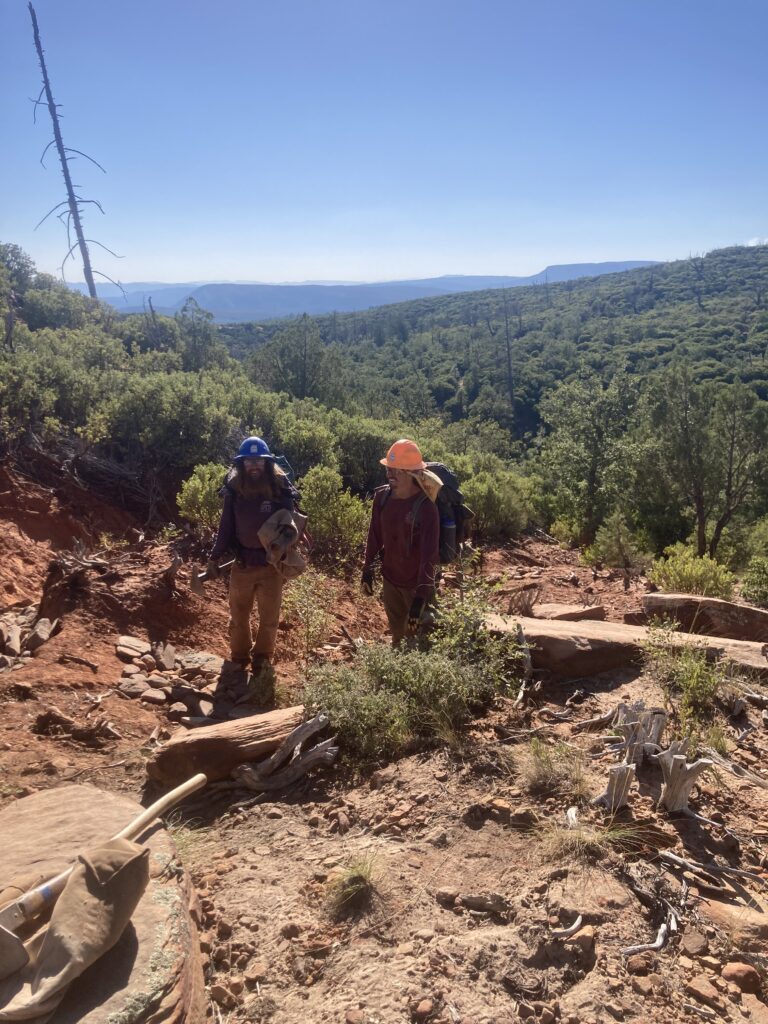
I would say these ugly bits of trail cannot be saved and must be rerouted. Fortunately, the powers at be agreed, and so dozens of miles of the Highline have been rerouted to new, sustainable layouts. That important work is being spearheaded by fellow trail-builders like Flagline Trails, and I must say, having biked, hiked, or run over almost all of their work, they have done an amazing job. They focus on using a small excavator, which while being a fast and efficient way to work, is not what we at Wild AZ specialize in. Instead, we get to work on something a bit different from our normal trail work routine: the retiring of older, unsustainable, erosive, and unpleasant bits of the Highline.
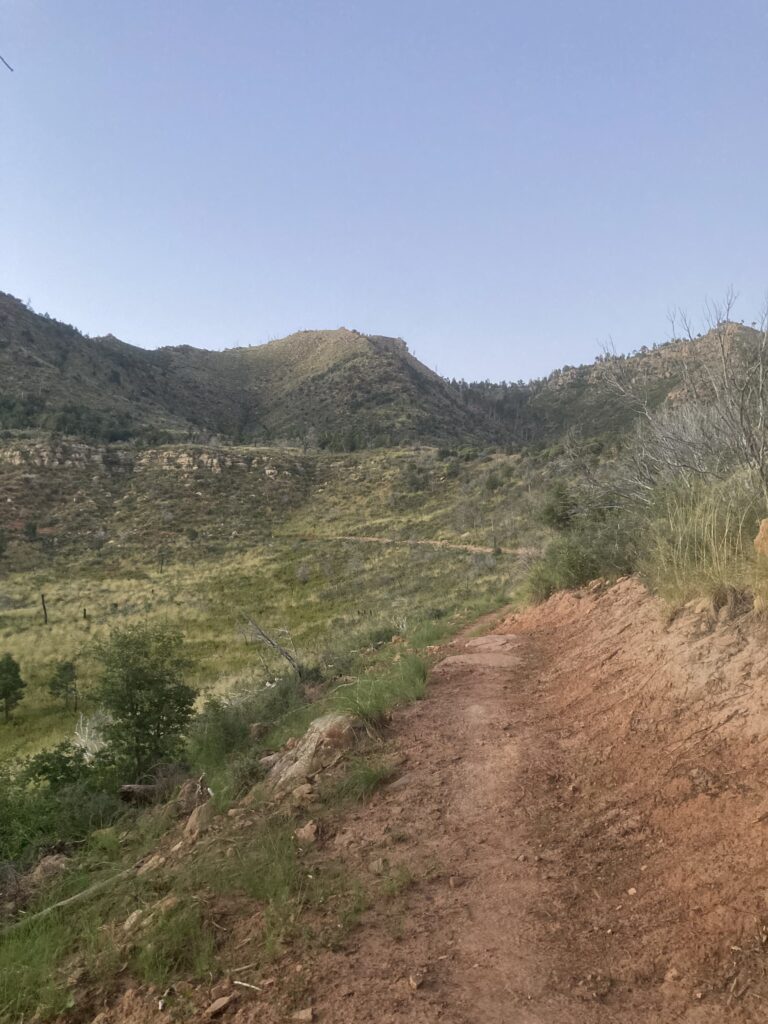
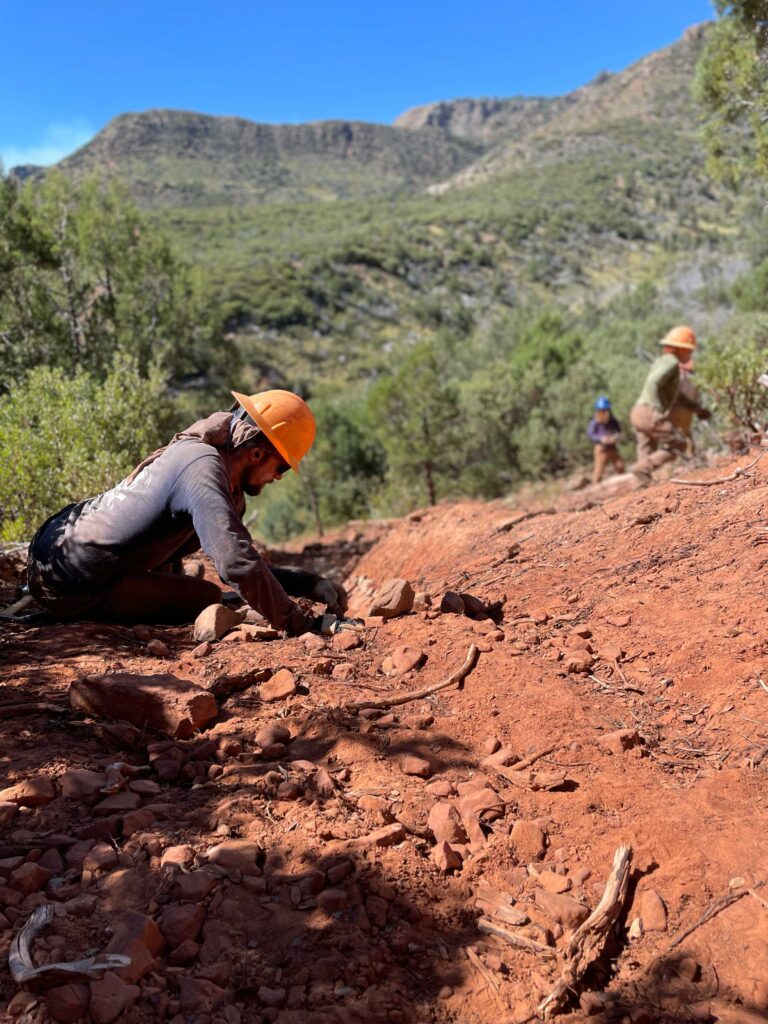
Left alone, the old trail will certainly still catch water, which will continue to not only erode precious soil and plants away, but will also hinder rainfall in its quest of seeping into the ground to replenish the water table. How can one possibly return it to looking like the lush landscape around it? Well, when you look at the precise work we actually did for this hitch, you can essentially boil it down to reorganizing small to small-medium large rocks on the ground. Indeed, it is the simplicity of the methods that we are employing which I find most enthralling.

By building small rock structures called one rock dams (ORDs) on the base of unnaturally channelized bits of the land, flowing surface water in the next rainstorm will carry sediment down and fill in the pore spaces in the structure. Come back next year, and you can build another ORD right on top of it. Build enough of them, and soon enough there is no channel at all! Yes, we borrowed from the tried-and-true methods laid out by such anti-erosion pioneers as Bill Zeedyk and Van Clothier, and we Let the Water Do the Work. What a joy.
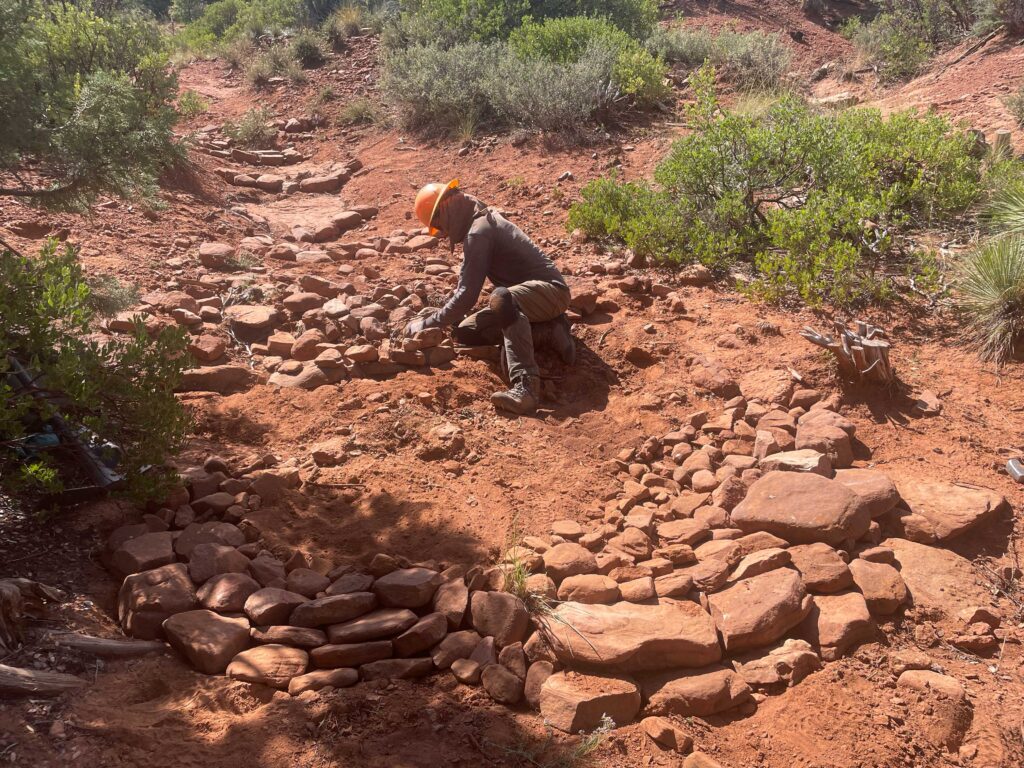
In total, we made 519 ORDs across 1.6 miles of old trail. In addition to this soil-saving superstar structure, we also built 53 rock mulch rundowns (essentially a longer, steeper ORD) and one massive Zuni bowl (a large armoring of a fittingly-large head cut, meant to stop the process of headward erosion) along the way. Just to pad the stats, we brushed out 4.3 miles of the newly-restored trail after some summer monsoon sproutings had come to try and rain on our shiny-new-trail parade.
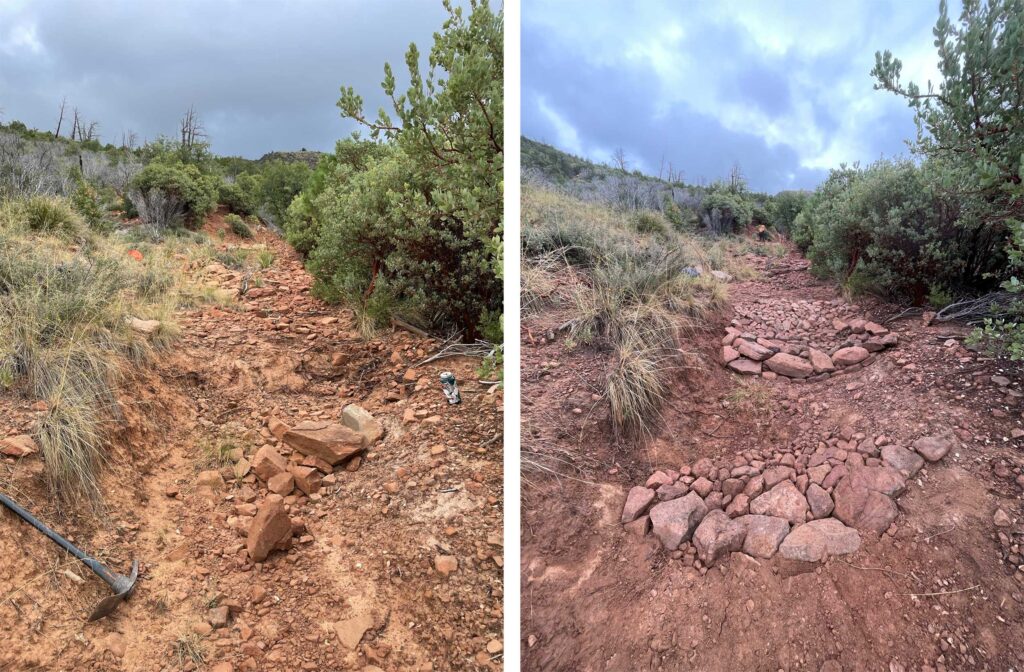
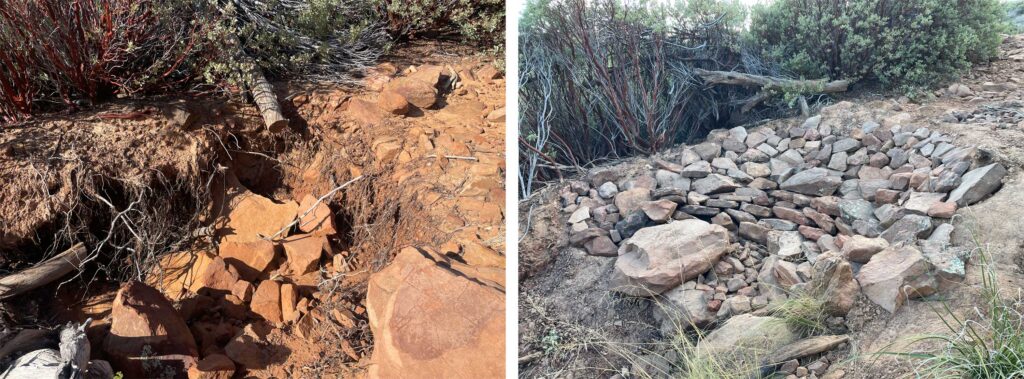
Man, did we have fun this hitch, too. Joseph did us all a solid and brought his projector so we could watch Nacho Libre on the side of our work trailer. Jonathan shared with us his trademark crunchwraps one evening. I made some Jamaican squash curry, courtesy of Ainsley Harriot, on another. Countless chocolate, cookies, and other treats were shared. We watched the full moon don its lunar eclipse hat, giving it the look of an eye looking up and to the left. Elk calls soothed us to sleep with whistling bugles, while coyotes woke us back up again with their hooting and hollering. We got to know our new crewmember, Clay. We watched the far off smoke and flames light up the trees from the West Fire. We thank the fire crews who have worked to keep this natural process away from threatening the nearby communities. To top it all off, I saw a northern pygmy owl on Tuesday.
I can’t wait to come back to continue our work on this project. If I haven’t made it clear so far, it is a wonderful area, the trail is wonderful, and I think you ought to go check it out. ’Til next time.

